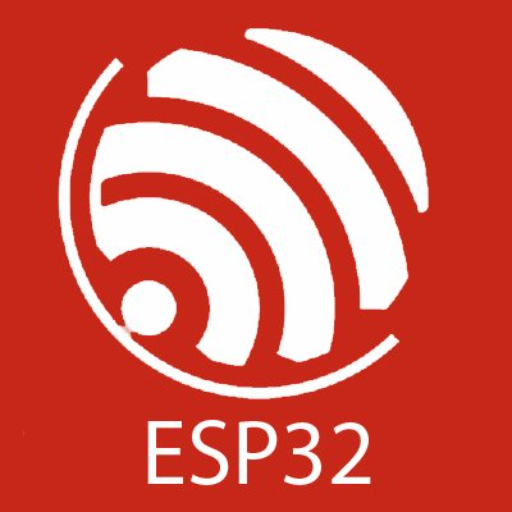PCB Assistance-AI-powered PCB design assistance
AI-powered assistance for your KiCAD projects.
How do I create a new project in KiCAD?
Can you explain how to add a component in KiCAD?
What's the best way to route traces in KiCAD?
Help me understand KiCAD's layer management.
How are libraries managed in KiCAD?
Related Tools
Load More
ESP32 IoT GPT
Discover the versatile capabilities of the ESP32, the go-to board for IoT innovations. Easily create IoT applications leveraging its Wi-Fi and BLE functionalities.

Electronics Hardware Design GPT
Expert in electronics and hardware design, circuit and PCB guidance

Circuit Helper
Assistant for LTspice and Logisim simulations

PCB (Printed Circuit Board) Designer
An AI PCB designer bot for electrical engineers, assisting in the design of custom PCB layouts for electronic devices.

PCB
Printed Circuit Board schematic and layout assistant - from idea to production

Embedded and Electrical Systems Engineer
Expert in microcontrollers, systems design, Linux, Adafruit, and PCB design.
20.0 / 5 (200 votes)
Introduction to PCB Assistance
PCB Assistance is a specialized assistant focused on helping users with KiCAD, a popular open-source PCB design tool. Its primary function is to provide step-by-step guidance in schematic capture, PCB layout, footprint creation, and library management. The goal of PCB Assistance is to make PCB design more accessible by breaking down complex tasks, offering detailed troubleshooting, and optimizing workflows for efficiency and manufacturability. For instance, if you're designing a complex multi-layer PCB and run into issues with component placement or routing, PCB Assistance can walk you through best practices and provide suggestions to improve your layout. Another scenario could involve creating custom footprints or managing KiCAD libraries efficiently; PCB Assistance would offer detailed instructions tailored to your specific needs.

Main Functions of PCB Assistance
Schematic Capture Guidance
Example
When designing a schematic for an IoT device, PCB Assistance helps you select components, wire them correctly, and ensure proper electrical connections between pins. It explains how to verify your schematic for errors before proceeding to the PCB layout phase.
Scenario
You’ve placed components but are unsure if the connections are correct. PCB Assistance helps with error checking and suggests component placement strategies.
PCB Layout and Routing Optimization
Example
If you’re routing a high-speed signal on a 4-layer PCB, PCB Assistance provides advice on impedance control, ground plane optimization, and signal integrity techniques. It helps reduce cross-talk and noise, improving overall PCB performance.
Scenario
After creating a schematic, you need help with the layout for signal-sensitive components like microcontrollers and RF modules. PCB Assistance provides recommendations on via placement, trace width, and power plane design.
Footprint Creation and Library Management
Example
If you need to create a custom footprint for a new component, PCB Assistance offers guidance on dimensioning, pad placement, and proper layer assignments. It ensures compatibility with your design’s manufacturing requirements.
Scenario
You have a new, custom component that doesn’t exist in standard KiCAD libraries. PCB Assistance helps you create and verify a new footprint, ensuring it meets your specific design and manufacturing standards.
Ideal Users of PCB Assistance
Beginners in PCB Design
Newcomers to PCB design who are just starting with KiCAD benefit significantly from PCB Assistance. It offers easy-to-follow, beginner-friendly guidance, simplifying the learning curve. They can avoid common mistakes such as incorrect schematic connections, improper footprint assignments, or poor layout choices by following step-by-step instructions tailored to their skill level.
Intermediate and Advanced Designers
Experienced users working on complex designs or tight deadlines also find value in PCB Assistance. These users might seek help with optimizing layouts for high-speed signals, multi-layer PCBs, or ensuring manufacturability. PCB Assistance offers advanced tips on signal integrity, design rule checks (DRC), and industry best practices, helping users fine-tune their designs for efficiency and performance.

How to Use PCB Assistance
Visit the website
Go to aichatonline.org for a free trial of PCB Assistance without the need for login or a ChatGPT Plus subscription.
Explore the Features
Browse the available PCB Assistance features like schematic capture tips, PCB layout guidance, footprint creation, and library management.
Ask Detailed Queries
Formulate specific questions regarding KiCAD tools, settings, and workflows. For best results, clearly define your design goals or challenges.
Receive Step-by-Step Guidance
PCB Assistance will provide in-depth answers, detailed steps, and useful tips to help you resolve design issues or optimize your project.
Apply Suggestions to KiCAD
Implement the solutions or workflow optimizations in your KiCAD project, and return with follow-up questions for further refinement if needed.
Try other advanced and practical GPTs
ASP.NET Core 8 Guide
AI-powered assistance for ASP.NET Core 8

NodeJS Copilot
AI-powered Node.js developer tool

Typescript Nodejs Developer
AI-Powered Node.js Development Assistance

AI Influencer Caption Creator
AI-powered captions to boost your influence

AI Influencer Generator
AI-powered influencer creation tool.

Story Weaver
AI-Powered Story Creation Tool

Ignitetech_ SQL Assistance for Postgres.
AI-Powered SQL Optimization for PostgreSQL.

Law Firm Website Builder By My Legal Academy
AI-Powered Website Builder for Lawyers

Professional Email Paraphraser
AI-powered professionalism for your emails.

国产喷子
AI-powered tool for sharp NPC creation

RizzGPT - Texting Assistant
AI-Powered Dating Text Assistant

I am not allowed to say "llama"
AI-powered creativity and coding assistant.

- Troubleshooting
- PCB Layout
- Schematic Capture
- Footprint Creation
- Library Management
Top 5 Questions About PCB Assistance
What types of KiCAD questions can I ask?
You can ask anything related to KiCAD, from schematic capture and PCB layout to library management and footprint creation. Whether you're a beginner or an advanced user, PCB Assistance can guide you through specific design challenges or general best practices.
How does PCB Assistance help optimize PCB designs?
PCB Assistance provides detailed advice on improving design efficiency, from routing strategies to component placement. It can also suggest tips for reducing noise, improving signal integrity, and ensuring manufacturability in your KiCAD project.
Can PCB Assistance help troubleshoot KiCAD errors?
Yes, PCB Assistance can help you troubleshoot common KiCAD errors such as DRC violations, ERC issues, or missing footprints. Just describe the error you're encountering, and you'll receive targeted steps to resolve it.
Is there a limit to the level of detail in responses?
No, PCB Assistance can provide both high-level overviews and granular, step-by-step instructions depending on your needs. Whether you're looking for a quick fix or a comprehensive explanation, responses can be tailored accordingly.
What are some advanced features of PCB Assistance?
Beyond basic design help, PCB Assistance excels in footprint creation, library management, differential pair routing, design rule setup, and optimizing designs for manufacturing (DFM). It also supports multi-layer PCB strategies and high-speed design tips.